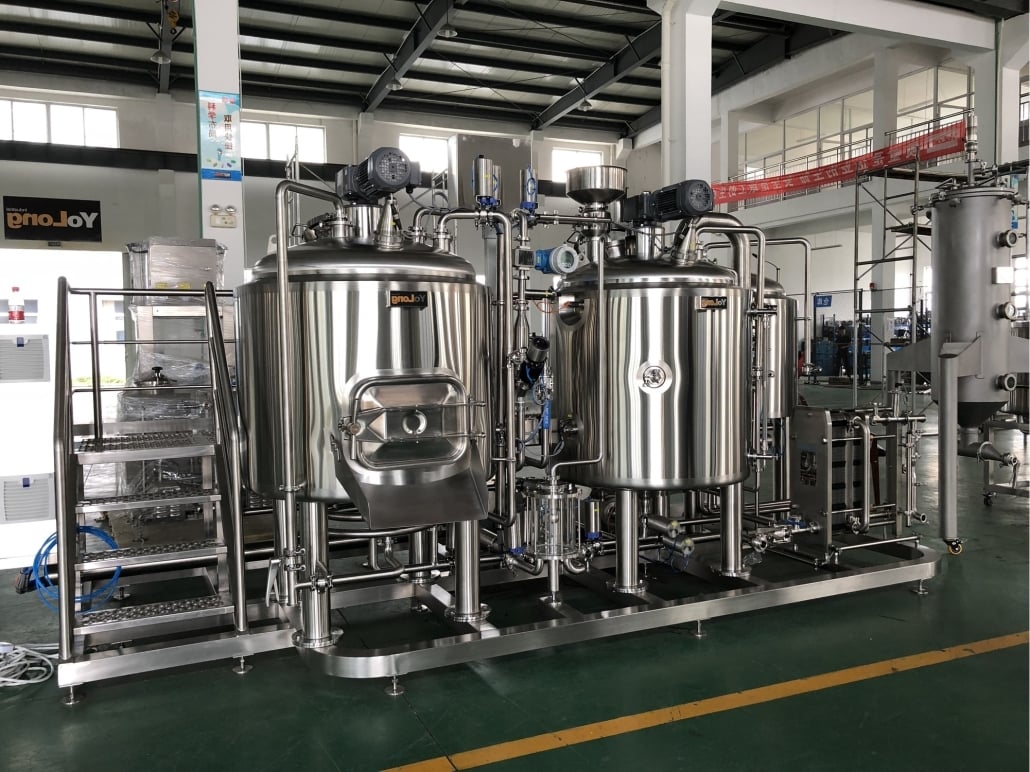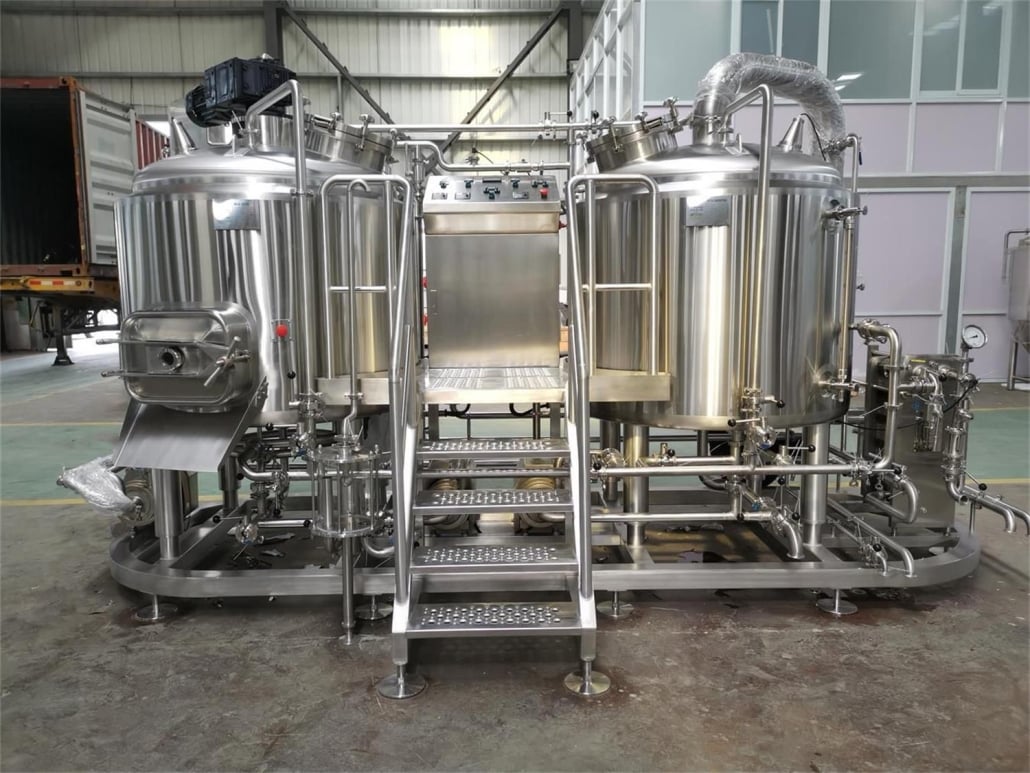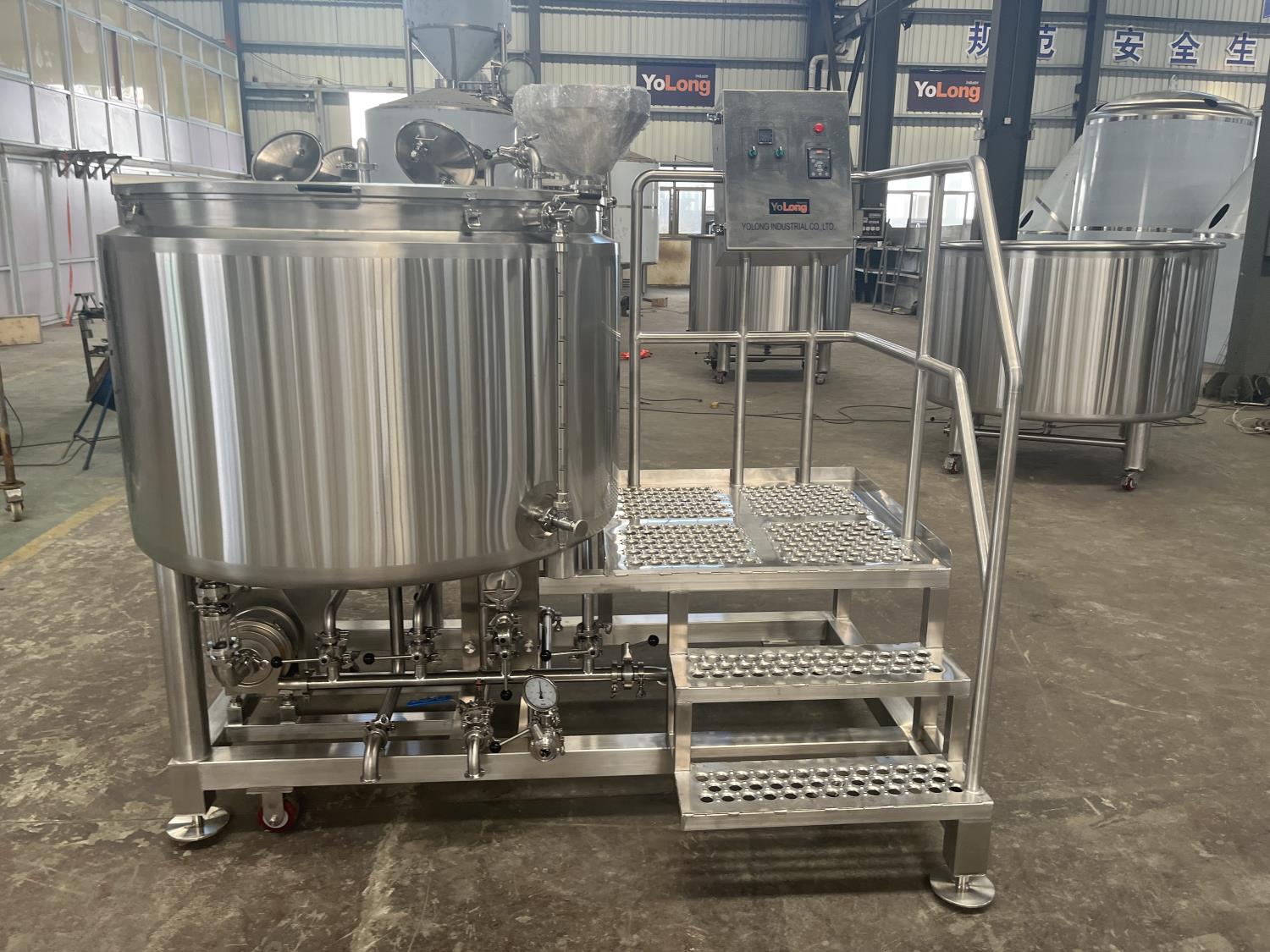Starting Your Own Microbrewery
Introduction
Starting your own microbrewery is a dream for many beer enthusiasts. It’s not just about brewing beer; it’s about crafting an experience, a brand, and a community. Whether you’re an experienced homebrewer ready to take the leap or an entrepreneur looking to tap into the growing craft beer market, this guide will walk you through every step. From understanding the essential equipment to choosing the right location and navigating the brewing process, we’ve got you covered.
Overview of Starting a Microbrewery
Before diving into the nitty-gritty of equipment and processes, let’s take a moment to understand the broader picture of starting a microbrewery. Craft breweries have seen explosive growth over the past decade, driven by consumers’ increasing demand for unique, high-quality beer. But starting a microbrewery is no small feat. It requires significant capital, in-depth knowledge of brewing techniques, a strong brand identity, and a clear understanding of the market.
Key Points to Consider:
- Market Demand: Assess the local and regional demand for craft beer. Is there a gap in the market that your microbrewery can fill?
- Business Plan: A solid business plan is essential. This should include your business goals, target market, budget, and financial projections.
- Location: Location is crucial for a microbrewery. Consider foot traffic, space for brewing equipment, and proximity to your target audience.
- Regulations: Microbreweries are subject to strict regulations, including licensing and health and safety standards. Familiarize yourself with the legal requirements in your area.

Presenting Your Microbrewery Equipment Guide
The equipment you choose is the backbone of your microbrewery. The right tools will ensure efficiency, consistency, and quality in your brewing process. But what exactly do you need to get started? Let’s break it down.
Essential Microbrewery Equipment
Starting a microbrewery requires a variety of equipment, each serving a specific purpose in the brewing process. Here’s an overview of the essential items:
Brewing System Overview:
Your brewing system is where the magic happens. It includes everything from the mash tun, where your grains are mixed with hot water, to the fermenter, where yeast transforms sugars into alcohol. The size and type of brewing system you choose will depend on your production goals and budget.
Table: Brewing System Components
| Component | Description | Capacity Range | Estimated Cost |
|---|---|---|---|
| Mash Tun | A vessel where malt is mixed with hot water to extract fermentable sugars. | 5-30 barrels | $5,000 – $20,000 |
| Boil Kettle | Used to boil the wort (unfermented beer) to sterilize and concentrate it, and to add hops for flavor. | 5-30 barrels | $10,000 – $50,000 |
| Fermenter | A tank where yeast is added to wort, allowing fermentation to occur, converting sugars into alcohol and CO2. | 5-30 barrels | $8,000 – $40,000 |
| Bright Tank | A vessel where beer is carbonated and clarified before packaging. | 5-30 barrels | $7,000 – $35,000 |
| Cooling System | Essential for controlling the temperature during fermentation. | Varies | $5,000 – $25,000 |
| Packaging Equipment | Equipment for bottling, canning, or kegging your beer. | Varies | $10,000 – $50,000 |
Brewing Process Overview
The brewing process is both an art and a science. It involves several key steps, each crucial to the final product. Here’s a detailed breakdown:
1. Milling: The process begins with milling the malted grains, which are crushed to expose the starches inside.
2. Mashing: The crushed grains are mixed with hot water in the mash tun, where the starches are converted into fermentable sugars.
3. Boiling: The resulting wort is boiled, and hops are added at various stages for bitterness, flavor, and aroma.
4. Fermentation: The boiled wort is cooled and transferred to the fermenter, where yeast is added. Fermentation typically takes one to two weeks.
5. Conditioning: After fermentation, the beer is conditioned in bright tanks, where it is carbonated and clarified.
6. Packaging: Finally, the beer is packaged in bottles, cans, or kegs for distribution.
Space, Design, and Layout Considerations for Your Microbrewery
Your microbrewery’s design and layout are vital for both functionality and customer experience. Let’s explore how to plan your space effectively.
Optimizing Space for Brewing and Serving
When it comes to microbrewery design, every square foot counts. You’ll need to balance the space allocated for brewing equipment with areas for serving customers, storage, and office work. A well-designed layout can improve workflow efficiency, reduce costs, and enhance the overall customer experience.
Table: Space Requirements for Microbrewery Layout
| Area | Recommended Space | Design Considerations |
|---|---|---|
| Brewing Area | 1,000-3,000 sq. ft. | Ensure easy access to all equipment, with enough space for movement and safety compliance. |
| Storage Area | 500-1,500 sq. ft. | Must accommodate raw materials, finished products, and cleaning supplies, with proper ventilation and humidity control. |
| Tasting Room | 500-2,000 sq. ft. | Design with customer experience in mind; consider seating, lighting, and aesthetics. |
| Office Space | 100-500 sq. ft. | A small, functional area for administrative tasks, accounting, and meetings. |
| Restrooms | 50-200 sq. ft. | Must be easily accessible, clean, and compliant with local health regulations. |
| Outdoor Space | Optional | Can be used for additional seating, events, or storage, depending on your location and climate. |
Customization Options for Your Microbrewery Design
Customization allows you to create a unique space that reflects your brand identity. From the layout of your brewing equipment to the design of your tasting room, there are many ways to tailor your microbrewery to fit your vision.
Key Customization Elements:
- Themed Decor: Align your decor with your brand’s story. Are you a rustic farmhouse brewery or a sleek, modern taproom?
- Unique Furniture: Custom furniture can enhance the ambiance and create a memorable experience for customers.
- Specialized Equipment: Consider investing in equipment that can be customized to your specific brewing needs, such as kettles with personalized engravings or fermenters with unique features.
Choosing the Right Suppliers for Your Microbrewery
Selecting reliable suppliers is critical to the success of your microbrewery. From brewing equipment to raw materials, the right suppliers will ensure you have high-quality inputs for your production process.
Finding and Evaluating Suppliers
When it comes to finding suppliers, there are several factors to consider. Cost, quality, reliability, and customer service are all essential. Start by researching potential suppliers online and reading reviews from other microbreweries. Once you have a shortlist, reach out to them for quotes and inquire about their terms and conditions.
Table: Supplier Comparison
| Supplier Name | Product Range | Price Range | Reliability | Customer Service | Customization Options |
|---|---|---|---|---|---|
| BrewTech | Brewing systems, fermenters | $50,000 – $200,000 | High | Excellent | Yes |
| CraftMaster | Packaging equipment, cooling systems | $40,000 – $150,000 | Medium | Good | Limited |
| BeerWorks | Raw materials, ingredients | $10,000 – $50,000 | High | Excellent | No |
| Brewer’s Choice | Complete brewing systems | $100,000 – $300,000 | Very High | Outstanding | Yes |
Installation, Operation, and Maintenance of Microbrewery Equipment
Once you’ve chosen your equipment and suppliers, the next step is installation. This phase is crucial because proper installation affects your brewery’s efficiency and safety.
Installation:
Installation should be handled by professionals with experience in brewery setups. They will ensure that all equipment is correctly positioned, connected, and tested before production begins.
Operation:
Operating a microbrewery requires a good understanding of each piece of equipment. Training your staff on the use and maintenance of the equipment is essential.
Maintenance:
Regular maintenance is vital to keep your equipment running smoothly. This includes cleaning, checking for wear and tear, and servicing any mechanical parts.
Table: Maintenance Schedule and Costs
| Equipment | Maintenance Frequency | Average Maintenance Cost | Potential Issues | Preventative Actions |
| Mash Tun | Monthly | $200 – $500 | Buildup of residue, leaks | Regular cleaning, inspection for leaks |
| Boil Kettle | Quarterly | $300 – $800 | Corrosion, clogging | Descaling, inspecting heating elements |
| Fermenter | Monthly | $250 – $600 | Temperature fluctuations, contamination | Sanitation, checking seals |
| Cooling System | Bi-annual | $500 – $1,000 | Inefficiency, coolant leaks | Regular coolant checks, cleaning fans |
| Packaging Equipment | Quarterly | $400 – $1,200 | Jamming, incorrect fills | Lubrication, calibration of sensors |
The Brewing Process in Detail
The heart of your microbrewery is the brewing process itself. Let’s dive deeper into each stage to understand how you can produce the best craft beer.
Milling and Mashing: The Foundation of Flavor
The brewing process starts with milling, where malted barley is ground into a coarse powder. This step is crucial because the size of the grind affects the extraction of fermentable sugars during mashing.
Mashing follows, where the ground malt is mixed with hot water in a mash tun. The temperature of the water is carefully controlled, as it influences the activity of enzymes that break down starches into sugars. These sugars are essential for fermentation, as they will be converted into alcohol and CO2 by the yeast.
Boiling and Hopping: Crafting the Beer’s Character
After mashing, the liquid, now called wort, is boiled. This step serves multiple purposes: it sterilizes the wort, extracts flavors from the hops, and evaporates unwanted volatile compounds. Hops are added during the boil to impart bitterness, flavor, and aroma. The timing of hop additions can vary, allowing brewers to craft a beer’s unique profile.
Fermentation: The Magical Transformation
Once the wort is boiled and cooled, it is transferred to a fermenter, where yeast is added. This is where the magic happens. The yeast consumes the sugars in the wort, producing alcohol, CO2, and a wide range of flavors. Temperature control is critical during fermentation, as different yeast strains and temperatures produce different flavor profiles.
Conditioning and Packaging: Perfecting the Final Product
After fermentation, the beer is transferred to bright tanks for conditioning. This process can last from a few days to several weeks, depending on the beer style. During conditioning, the beer is carbonated and clarified, giving it the perfect taste and appearance.
Finally, the beer is packaged in bottles, cans, or kegs. Proper packaging is essential for preserving the beer’s quality and ensuring it reaches consumers in peak condition.
Advantages and Challenges of Starting Your Own Microbrewery
Starting a microbrewery is an exciting venture, but it’s not without its challenges. Let’s take a look at the pros and cons to help you make an informed decision.
Advantages of Starting Your Own Microbrewery
1. Creative Freedom: Owning a microbrewery allows you to experiment with different recipes and brewing techniques. You can create unique beers that reflect your personal taste and creativity.
2. Community Engagement: Microbreweries often become local hubs, where people gather to enjoy good beer and good company. This community connection can be incredibly rewarding.
3. Growing Market: The craft beer market continues to grow, with consumers increasingly seeking out unique, high-quality products. This presents a significant opportunity for microbreweries to thrive.
4. Potential for Profit: With the right business model, a microbrewery can be highly profitable. Specialty beers often command higher prices, and many microbreweries supplement their income with taprooms, events, and merchandise.
Challenges of Starting Your Own Microbrewery
1. High Initial Costs: Setting up a microbrewery requires significant upfront investment in equipment, licenses, and space. These costs can be a barrier for many aspiring brewers.
2. Regulatory Hurdles: The brewing industry is heavily regulated. Navigating the complex web of licenses, permits, and health regulations can be time-consuming and costly.
3. Operational Complexity: Running a microbrewery involves managing production, marketing, sales, and customer service. This can be overwhelming, especially for those new to the industry.
4. Market Competition: The craft beer market is competitive, with many established players. Standing out in a crowded market requires a strong brand and a unique product offering.
Table: Advantages vs. Challenges
| Advantages | Challenges |
|---|---|
| Creative Freedom | High Initial Costs |
| Community Engagement | Regulatory Hurdles |
| Growing Market | Operational Complexity |
| Potential for Profit | Market Competition |
How to Choose the Right Supplier for Your Microbrewery
Choosing the right supplier is crucial to the success of your microbrewery. The right partners can provide high-quality equipment, ingredients, and support, while the wrong ones can lead to delays, subpar products, and higher costs.
Key Factors to Consider When Choosing a Supplier
1. Quality: The quality of your beer depends on the quality of your equipment and ingredients. Look for suppliers with a strong reputation for reliability and excellence.
2. Cost: While it’s important to manage costs, choosing the cheapest option isn’t always the best strategy. Consider the total value, including durability, efficiency, and customer support.
3. Reliability: A reliable supplier delivers on time and stands by their products. Check reviews and ask for references to ensure you’re choosing a trustworthy partner.
4. Customization: Depending on your brewing needs, you may require customized equipment. Make sure your supplier can accommodate special requests.
5. Support: Good customer support is essential, especially when it comes to installing and maintaining your equipment. Choose a supplier that offers comprehensive support services.
Table: Supplier Selection Criteria
| Criteria | Importance | Considerations |
|---|---|---|
| Quality | High | Reputation, certifications, warranties |
| Cost | Medium | Upfront cost vs. long-term value |
| Reliability | High | Delivery times, customer feedback |
| Customization | Variable | Ability to meet specific needs |
| Support | High | Installation, training, maintenance |

FAQ
1. How much does it cost to start a microbrewery?
Starting a microbrewery can cost anywhere from $100,000 to $1 million, depending on the size, location, and equipment choices. The biggest expenses typically include brewing equipment, real estate, and licensing fees.
2. What are the legal requirements for starting a microbrewery?
Legal requirements vary by location but generally include obtaining a brewing license, a permit for alcohol production and sales, health and safety certifications, and compliance with zoning laws.
3. How much space do I need for a microbrewery?
The space required for a microbrewery can vary, but most microbreweries need between 2,000 and 10,000 square feet. This includes space for brewing, storage, and a tasting room.
4. Can I start a microbrewery at home?
In some regions, you can start a small-scale microbrewery at home, but it’s subject to strict regulations. Home-based microbreweries are typically limited in production capacity and sales volume.
5. What kind of beer can I brew in a microbrewery?
You can brew any type of beer in a microbrewery, from classic lagers and ales to experimental brews with unique ingredients. Your creativity is the only limit.
Conclusion
Starting your own microbrewery is a challenging but rewarding endeavor. With careful planning, a solid business strategy, and a passion for brewing, you can turn your dream into reality. This guide has covered everything from equipment selection and space planning to brewing techniques and supplier choices, giving you the tools you need to succeed in the craft beer industry. So, are you ready to brew your own path.
This article has been structured to be SEO-friendly, providing detailed insights into starting a microbrewery while using tables for clarity and comparison. Each section is designed to keep the reader engaged with a conversational tone, making complex information more accessible and enjoyable. If you need further customization or additional sections, feel free to ask!
Share this entry
Interested in learning more about Brewing Systems including additional details and pricing information? Please use the form below to contact us!
YOLONG BREWERY EQUIPMENT FAQS
- Commercial Brewery / Craft Brewery / Microbrewery / Nanobrewery
- What is The Difference Between Craft Beer and Industrial Beer?
- The Bespoke Differences In Custom Brewing Systems
- Everything You Need to Know About Kettle Souring
- How to Choose Brewing Equipment for Your business?
- How To Choose The-Best Partner To Build Your Commercial Microbrewing System?
- Two Detection Sensors That You Need To Use In Your Brewhouse System
- Remote Control Applications in Brewing Equipment/How does it work?
- How To Clean Your Brand New Brewery Tanks?

